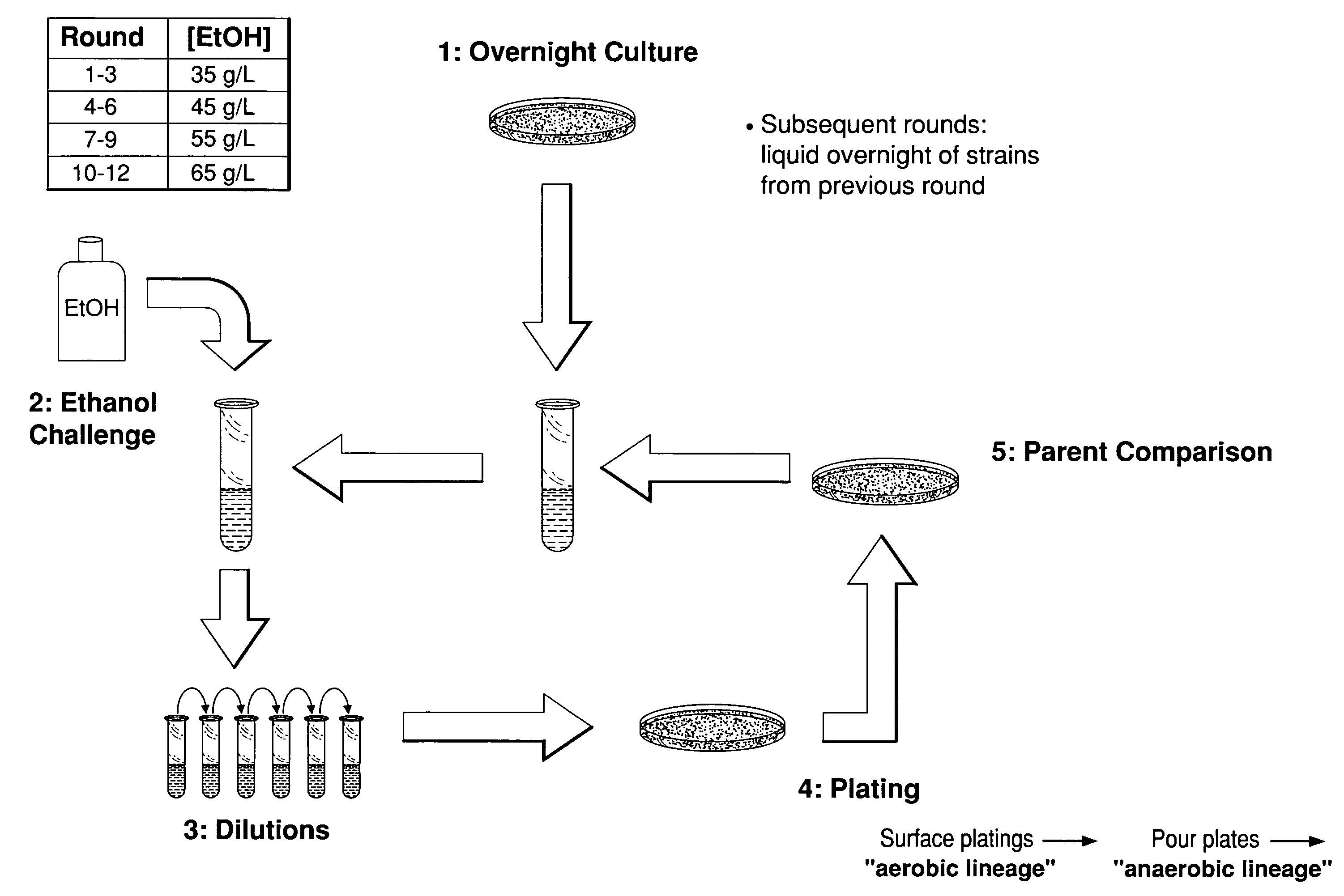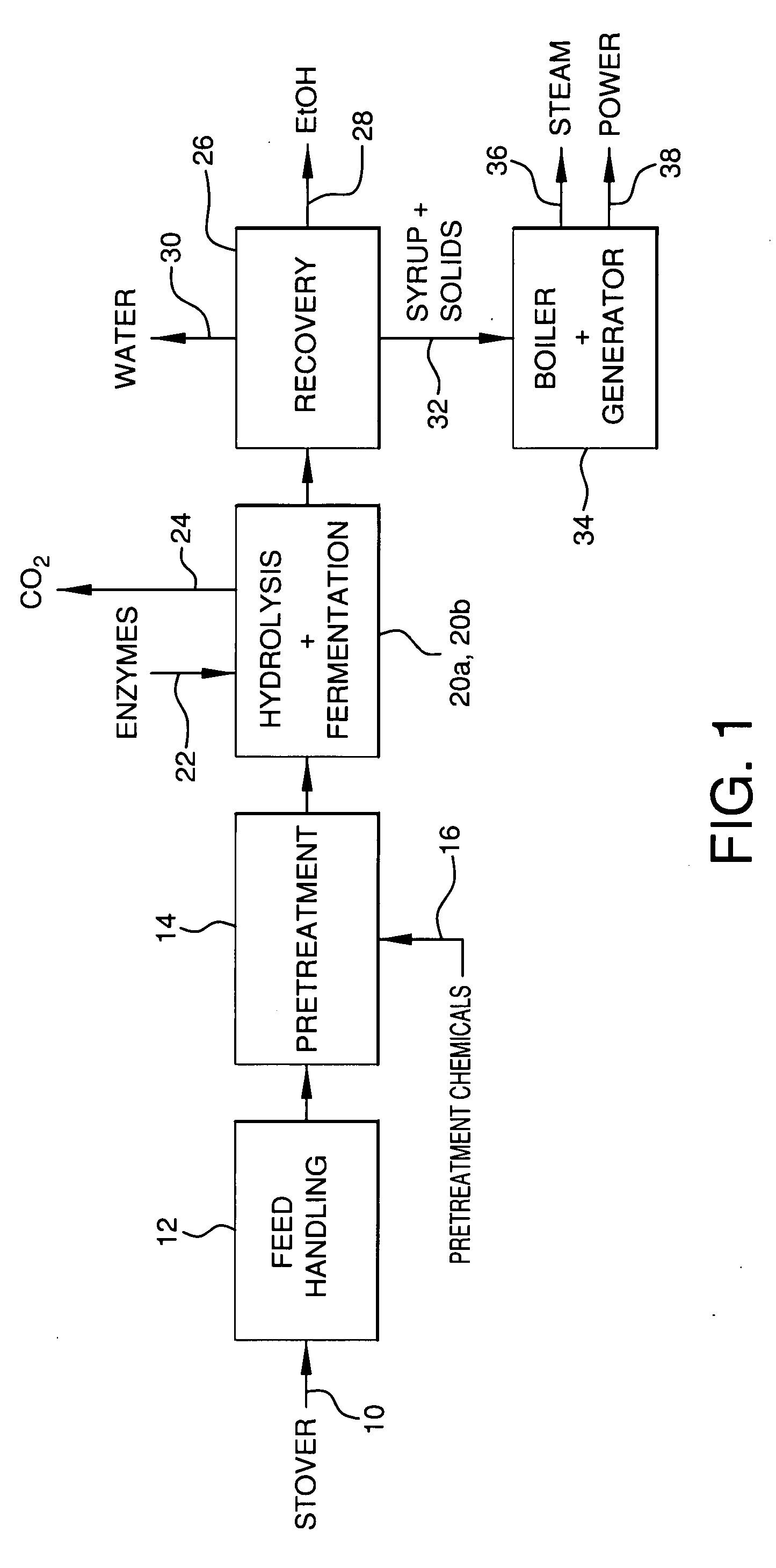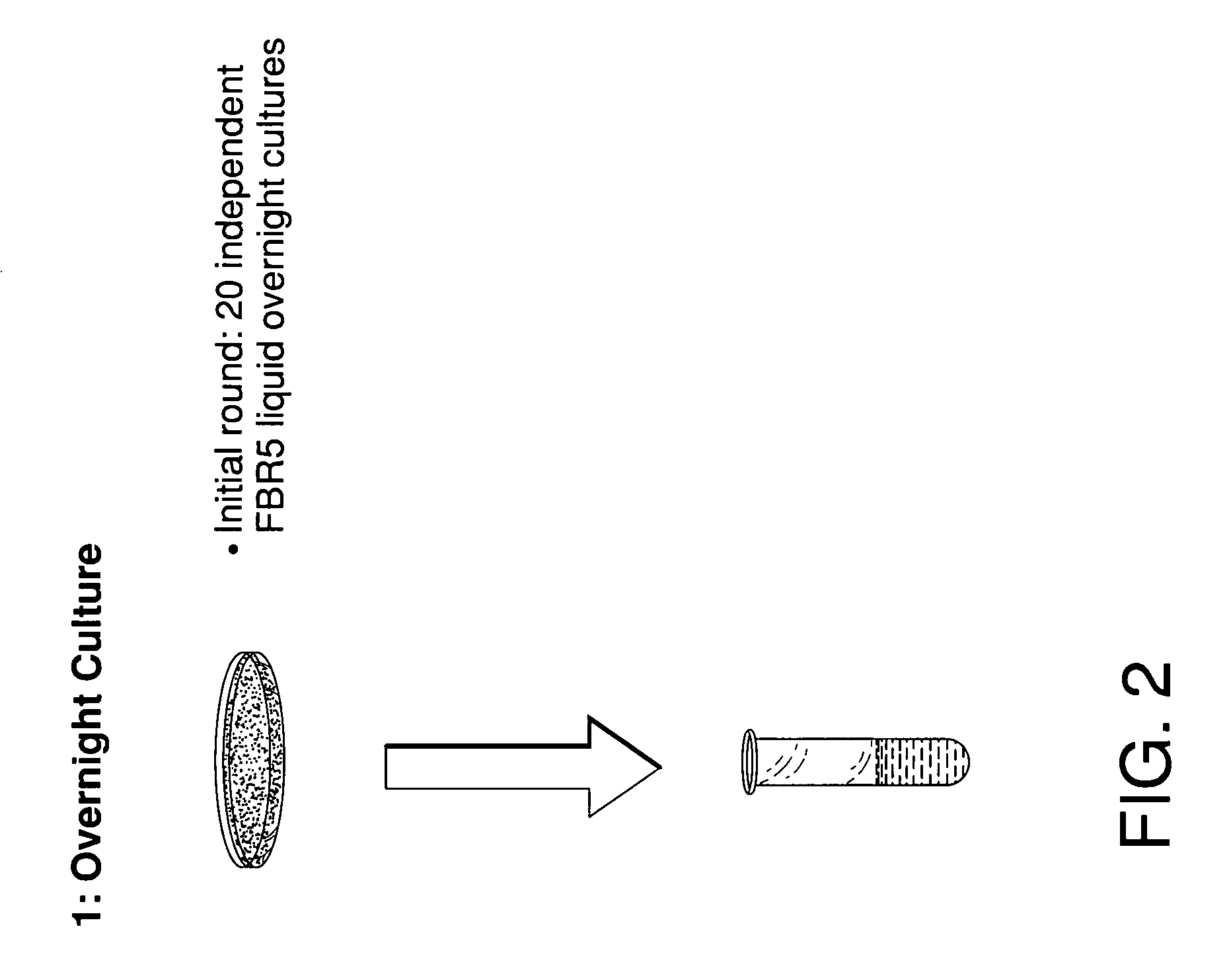Ethanol resistant and furfural resistant strains of E. coli FBR5 for production of ethanol from cellulosic biomass
a technology of ethanol and cellulosic biomass, which is applied in the direction of biofuels, microorganisms, bacteria based processes, etc., can solve the problems of uneconomical ethanol production from lignocellulosic biomass, untapped residual agricultural biomass, and untapped resource, etc., to achieve rapid ethanol production, high ethanol yield, and maximize ethanol concentration
- Summary
- Abstract
- Description
- Claims
- Application Information
AI Technical Summary
Benefits of technology
Problems solved by technology
Method used
Image
Examples
Embodiment Construction
[0043]Referring to FIG. 1, there is shown is a schematic representation of a typical bioethanol production process. During feed handling, bales or other quantities of lignocellulosic biomass 10 such as, by way of example but not limitation, corn stover, are initially feed handled at step 12. In typical feed handling the biomass is unwrapped, washed, and milled in preparation for chemical pretreatment at step 14. Biomass must be pretreated to realize high sugar yields that are vital to the commercial success of the process. At minimum, pretreatment prepares cellulose for enzymatic hydrolysis with high yields. Some pretreatments are also effective at releasing monomer sugars from hemicellulose. Any suitable pretreatment chemicals 16 may used be in the pretreatment phase. Typical pretreatment chemicals may include, for example, and without limitation, water, steam, ammonia, one or more acids, including but not limited to sulfuric acid, or other constituents depending on the source biom...
PUM
 Login to View More
Login to View More Abstract
Description
Claims
Application Information
 Login to View More
Login to View More - R&D
- Intellectual Property
- Life Sciences
- Materials
- Tech Scout
- Unparalleled Data Quality
- Higher Quality Content
- 60% Fewer Hallucinations
Browse by: Latest US Patents, China's latest patents, Technical Efficacy Thesaurus, Application Domain, Technology Topic, Popular Technical Reports.
© 2025 PatSnap. All rights reserved.Legal|Privacy policy|Modern Slavery Act Transparency Statement|Sitemap|About US| Contact US: help@patsnap.com



